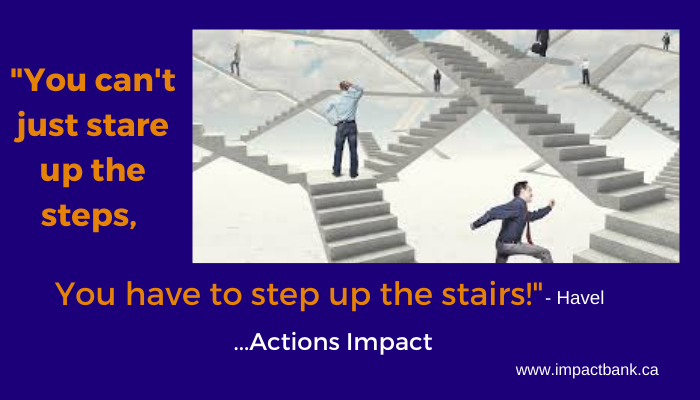The wellbeing of every stakeholder and the organization itself is, or at least should be, the quest of every leader. Whether leading a team or an organization, I suggest this is a basic competency of high-performing, effective leadership. Ensuring the wellbeing of all stakeholders is a lead indicator that will result in the realization of sustainable success. Results that will exceed competitor and internal expectations.
In the embedded podcast episode, also available on my podcast site, I examine the two commonly required competencies of responsibility and accountability through three filters: the systemic (connectivity); dynamic (ever-evolving) essence; and the agentic (autonomy/action) orientation. Additionally, in the podcast, I clarify how I differentiate between responsibility and accountability while accepting that we reference and apply them in relationship to one another.
Here, in the blog, I simply want to emphasize the role of the leader as a direction setter on a team or for an organization to ensure a healthy and robust use and understanding of these two core competencies.
Open Dialogue to Define and Embed Wellbeing
First, and perhaps obviously, it is essential that a team and organization have a clear and shared understanding of how responsibility and accountability are observed, measured, evaluated and valued in the organization. In the podcast episode I mention leadership roundtables I facilitated in the ’90’s. I recommend leaders consider this type of open dialogue in their organization in 2023. When employees at all levels are engaged to this degree, they rarely sabotage the application/execution. THIS is a powerful way to sustain a healthy culture of ownership/performance.
So often, in my observation, organizations take for granted that everyone knows what is expected and valued: the basic principles. We know from neurologists studying human behaviour in organizations, this is fool-hardy. Leaders must make the implicit explicit.
In the roundtables I facilitated I was intrigued by the sometimes heated conversations just in our effort to define responsibility and accountability.
Do I share responsibility, when and with whom? What if every member of a team is each 100% responsible and accountable? If I am responsible, how much control and autonomy must I have?
When I am accountable how will it be measured? To whom am I accountable? For what specifically is a leader accountable? At what point (when) is the point of accountability?
Whether choosing to use a formal approach, for instance using Bohm’s “On Dialogue” design, or some informal or digitally based form of conversation, building a common approach to establishing responsibility and accountability metrics et al, is the foundation to expanding wellbeing in all its forms.
The Podcast Episode
Structural Wellbeing in Silos
Wellbeing is more top-of-mind since the pandemic, typically designated to the HR space. I suggest it belongs with leadership at every level and in every corner of an organization. It is just that important to the future success of any enterprise.
Just this week Canadians saw how silo’d practices make for poor decision making at the highest levels. Responsibility and accountability, as my definition articulates, are about how organizations do anything and how the results of their actions are evaluated.
The RCMP procurement of technology opened Canada to potential surveillance by China through technology embedded into radio communications. The lack of attention to the “what” (responsibility) of every decision and appreciation for the “impacts” (accountability) of these decisions left authorities scrambling. It appears, with a silo’d kind of thinking, short term minuscule savings was put ahead of national security. I suggest every leader in any field or organization learn from this. The Minister of Innovation Phillipe François Champagne has, after the fact, established guard rails to help properly position responsibility and accountability to avoid such a situation in the future.
Everything is connected and systems thinking offers leaders a great, while ever expanding, model to recognize the importance of rethinking a tendency to atomize. In my observation, leaders have found simplicity/ease in atomizing: treating organizations as though they are made up of many discrete units. This has proven to be unwise and short-sighted.
It seems so obvious NOW! As Galileo so aptly and wisely said, “All truths are easy to understand once they are discovered; the point is to discover them”. Start with open and wide ranging conversations. First, to understand how people in your organization understand and then, to execute a healthy and shared understanding of responsibility and accountability.
Actions Have Consequences
“You can’t just stare up the steps. You have to step up the stairs.” – Havel
Because it is clear that actions, even the smallest ones, have consequences, leaders must take this seriously. Mindset and attitude result in behaviours which generate outcomes. How an organization defines, evolves and evaluates that which constitutes both responsibility and accountability matters more and more.
Operating is a dance and every step must be well choreographed for the joy and flow to improve over time. The key is to build a practice of both responsibility and accountability that promotes a healthy understanding of both. A strategy that is frequently re-evaluated with input through out the organization ensures best outcomes and processes.
Don’t expect miracles but do get started in entertaining how revisiting responsibility and accountability may be your game changer in 2023. Take a fresh approach with a wise old concept to improve feelings of wellbeing and improve the organizations outcomes.
CONTACT ME
I am active on LinkedIn so learn more about me there and connect with me.
Check out my website and hear my signature story and read my bio.
Schedule a complimentary conversation on my calendar to discuss my post or to get to know me better.


Awesome issues here. I’m very satisfied to look your post.
Thank you so much and I’m having a look forward to contact you.
Will you please drop me a mail?